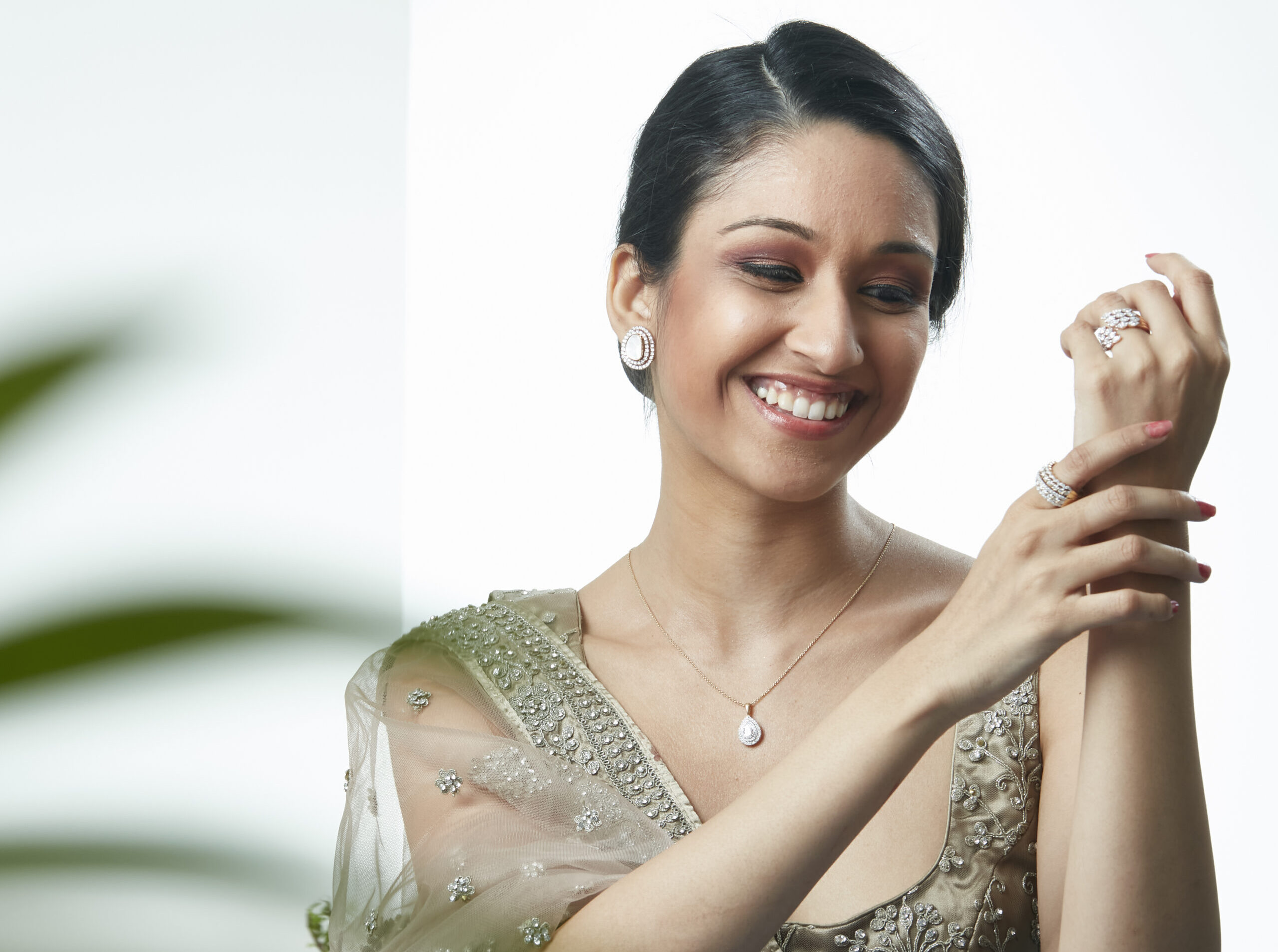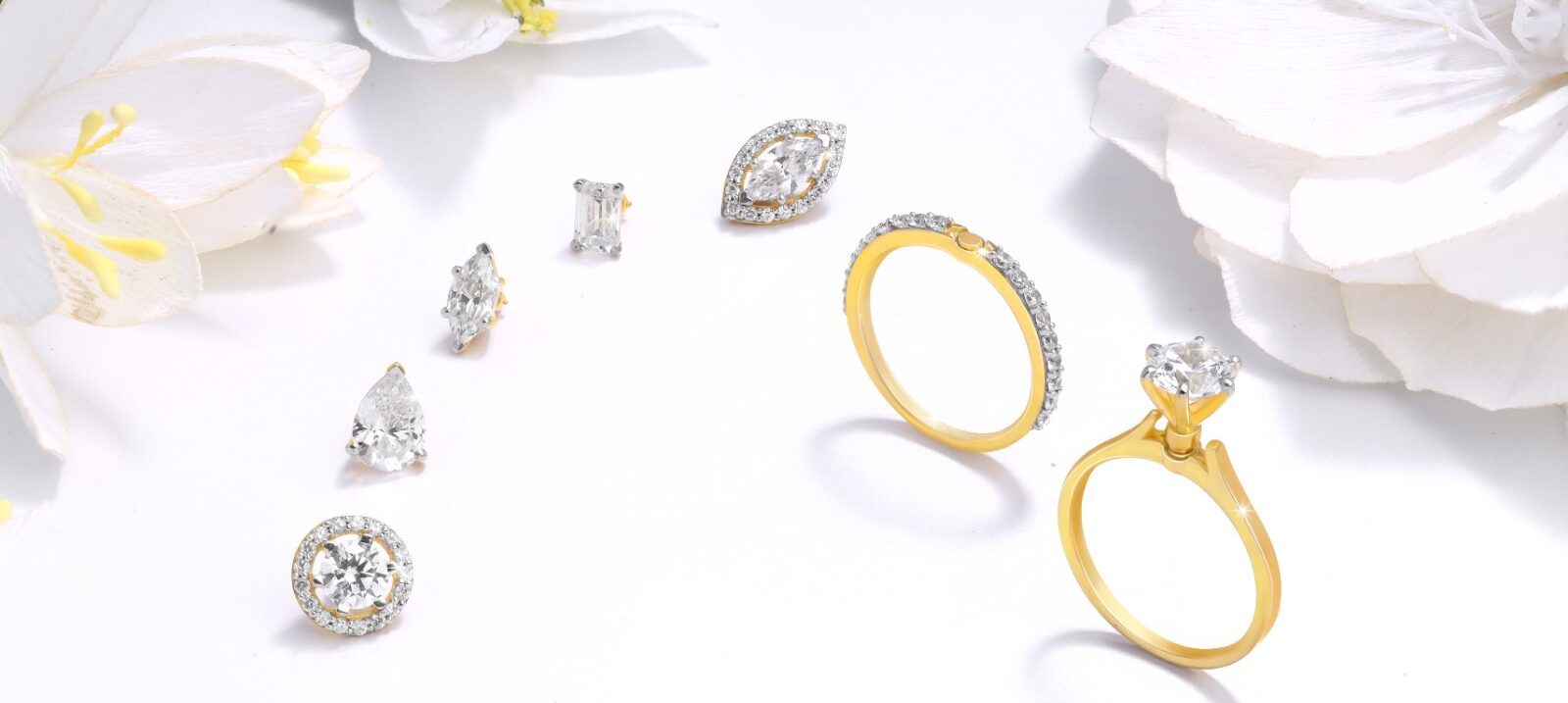A look at the different facets responsible for the growing popularity of lab-grown diamonds, which may quickly outshine their natural counterparts…
Lab-grown diamonds (LGDs) came into the limelight in India when Prime Minister Narendra Modi gifted a 7.5-carat lab-grown diamond to Jill Biden, the First Lady of the United States of America, during his visit to the country last year. Although invented in 1954 by American multinational conglomerate GE, man-made diamonds (also known as grown diamonds) have surged in popularity only in recent years.
“Just a few years ago, only one or two out of every five engagement rings sold were crafted from grown diamonds. Today, however, every third engagement ring sold in the United States is made from Grown Diamonds, marking a seismic shift in consumer preferences,” Lisa Mukhedkar, founder and chief executive officer, Aukera Jewellery, which is into lab-grown diamonds, told IndiaRetailing.com.
“India will follow the same trend and trajectory,” she added. At Aukera, which started operations in March 2023, and which has two stores launched under the brand name ‘Aukera Grown Diamond Jewellery’ in August 2023 and February 2024, 1-carat to 1.5-carat grown diamonds are the most popular.
Market Overview
Globally, LGD sales have skyrocketed from under $1 billion in 2016 to nearly $12 Billion in 2023, as per financial and diamond industry analyst Paul Zimnisky. These diamonds now account for over 17% of total sales, as per diamond research firm Edahn Golan.
The entry of international giants like Pandora, Swarovski, De Beers, and Cartier into the Grown Diamond arena over the years has added credibility to the category.
Legacy brands incorporating grown diamonds into their offerings further validate the growing demand for these ethically sourced gems.
The India picture
The Indian lab-grown diamond industry has been export-driven for the last five years, according to industry analyst Anil Prabhakar. India claims a 25%-30% market share in production, making it the biggest contributor to this industry globally.
“In 2023, exports of polished lab-grown diamonds from India increased by more than 50% in volume terms to 6.45 million carats (2022: 4.28 million carats), even as they dropped by almost 20% in value terms to $1.38 million (2022: $1.72 million),” Prabhakar said.
The domestic LGD Jewellery market is about 10% of the total jewellery market today, asper Disha Shah, Founder & Designer, DiAi Designs which retails sustainable LGD jewellery. “It has seen rapid growth in the past three years, with a 6-8% increase in 2023,” said Shah.
With consumers becoming more aware of its benefits, domestic consumption of LGDs has been on the rise too. This has led to several players entering the segment.
“It is estimated that there are 100 to 150 jewellers retailing LGDs. In the absence of authentic data, the market size is estimated to be around Rs. 100 crore and growing,” said Prabhakar.
“In the last 2-3 years, exclusive stores retailing LGDs have come up—brands like the Coimbatore-based Wondr and Mumbai-based Limelight have pan-India stores; multi-brand retailers have also created shop in shops/corners in their jewellery stores,” Prabhakar added.
Mukhedkar of Aukera, which only sells LGD jewellery, has reported getting a steady influx of customers not just from metros but from tier 1 and 2 as well.

Growth drivers
Here are the different facets that are contributing to the growth of lab-grown diamonds in India…
Similarity to natural diamonds: Grown diamonds possess identical optical, physical, and chemical properties as mined diamonds. They undergo the same rigorous evaluation based on the 4C parameters—cut, colour, clarity, and carat—as their mined counterparts.
“Their credibility as genuine and real diamonds is reinforced by recognition and certifications from reputable bodies such as the Federal Trade Commission, International Gemological Institute (IGI), and Gemological Institute of America (GIA), among others,” Mukhedkar explained.
In fact, grown diamonds are better than mined diamonds because of several reasons.
“The best part of “growing” diamonds is that we can engineer the outcome—right from the cut, colour, clarity and carat size—to get exactly what your heart wants,” said Ishendra Agarwal, founder of Giva. The 2019-founded omnichannel jeweller that sells gold and silver jewellery, online and through its 100 stores in 22 cities, entered the LGD category in April 2023.
“Lab-grown diamonds are produced in a shorter time frame and with minimal environmental impact compared to traditional mining methods,” said Darayus Mehta, co-founder, of LGD jewellery brand True Diamond, which has been selling over 100 carats of lab-grown diamonds a month online since the D2C brand started in January 2024.
Government Support: The global lab diamond production is around 6 to 7 million carats. Of this, 1.5 million carats are produced by India as per data by LGD manufacturer Grown Diamond Corporation.
Recognising the potential of this segment, the government of India is extending a lot of support.
“With Govt of India supporting the industry, the domestic market has witnessed a lot of enthusiasm, activity and investment from retailers,” Prabhakar said.
The favourable policies in place include the removal of the 5% duty on seed imports, which will further make LGDs cost-effective. In comparison, the duty on cut and polished natural diamond imports is 5%.
Furthermore, in the Union Budget 2023-24, the government announced a five-year research grant of Rs242.96 to the Indian Institute of Technology (IIT) Madras to encourage the indigenous production of LGD machinery, seeds and recipes. This is expected to improve the supply of LGDs for export and internal consumption and reduce reliance on seed imports.

Faster Production: Unlike mined diamonds, which can take millions of years to form, lab-grown diamonds can be created in a matter of weeks. “This means retailers wouldn’t be limited by the availability of mined stones and could potentially stock more diamonds,” said Agarwal of Giva.
Sustainability: As they are created under controlled conditions, they do not harm the environment. Furthermore, they leave a negligible carbon footprint than mined diamonds. “Increasing customer awareness of the significant benefits of grown diamonds, including their pro-earth aspects, is driving up demand. The conscious choice aspect is also influencing demand positively,” said Mukhedkar.
Price advantage: Typically, a 1-carat grown diamond costs Rs. 70,000 to Rs. 2 lakhs, depending on the colour, clarity and cut, which is about 60% to 90% cheaper than mined diamonds of comparable quality. For instance, a single carat VS1 clarity, E colour earth-mined solitaire costs ~ Rs4 lakh while a grown solitaire of the same specifications would cost only Rs 0.4 lakh.
Mukhedkar feels that the significant cost difference makes grown diamonds an attractive investment choice for consumers looking to maximize value without compromising on quality or aesthetics.
A bright future
In the next three to five years, India is anticipated to transition from being primarily a manufacturing hub for LGD exports to emerging as a significant domestic consumer of grown diamonds.
In the US, which currently accounts for 75-80% of global consumption, demand for LGDs has witnessed substantial growth in recent years. A similar trend is expected in India, said the brand representatives.
In India, grown diamond jewellery sales were at $264.5 million in 2022 as per research firm Future Market Insights (FMI), which expects LGD sales to grow at a Compound Annual Growth Rate (CAGR) of 14.8%, reaching about $1.2 billion by 2033.
Growth is expected in volume too. “The market demand for LGDs is expected to double from 9 million carats in 2022 to over 19 million carats in 2030 to meet the growing demand,” said Agarwal.
Shah of DiAi Designs expects an annual growth of 5%-7% for her company.
“With less than 5% of women wearing diamonds in India, there is ample scope to increase penetration, driven by affordability, thus leading to a rising preference for grown diamonds,” Mukhedkar said.
Agarwal of Giva is expecting its LGD portfolio to play a significant part in adding to its revenues, adding 70% to its current sale of silver jewellery. He said that 85% of Giva’s existing customers who buy gold and silver have shown an interest in buying LGDs.
Mehta of True Diamond expects LGD sales at his company to grow 100X in the next six months, driven by increased awareness, innovations and brand-building initiatives.
“The category will get a further boost when large chain stores join the fray. They are non-committal and are studying the market dynamics. It is only a matter of time before they launch LGD jewellery collections,” Prabhakar added.


